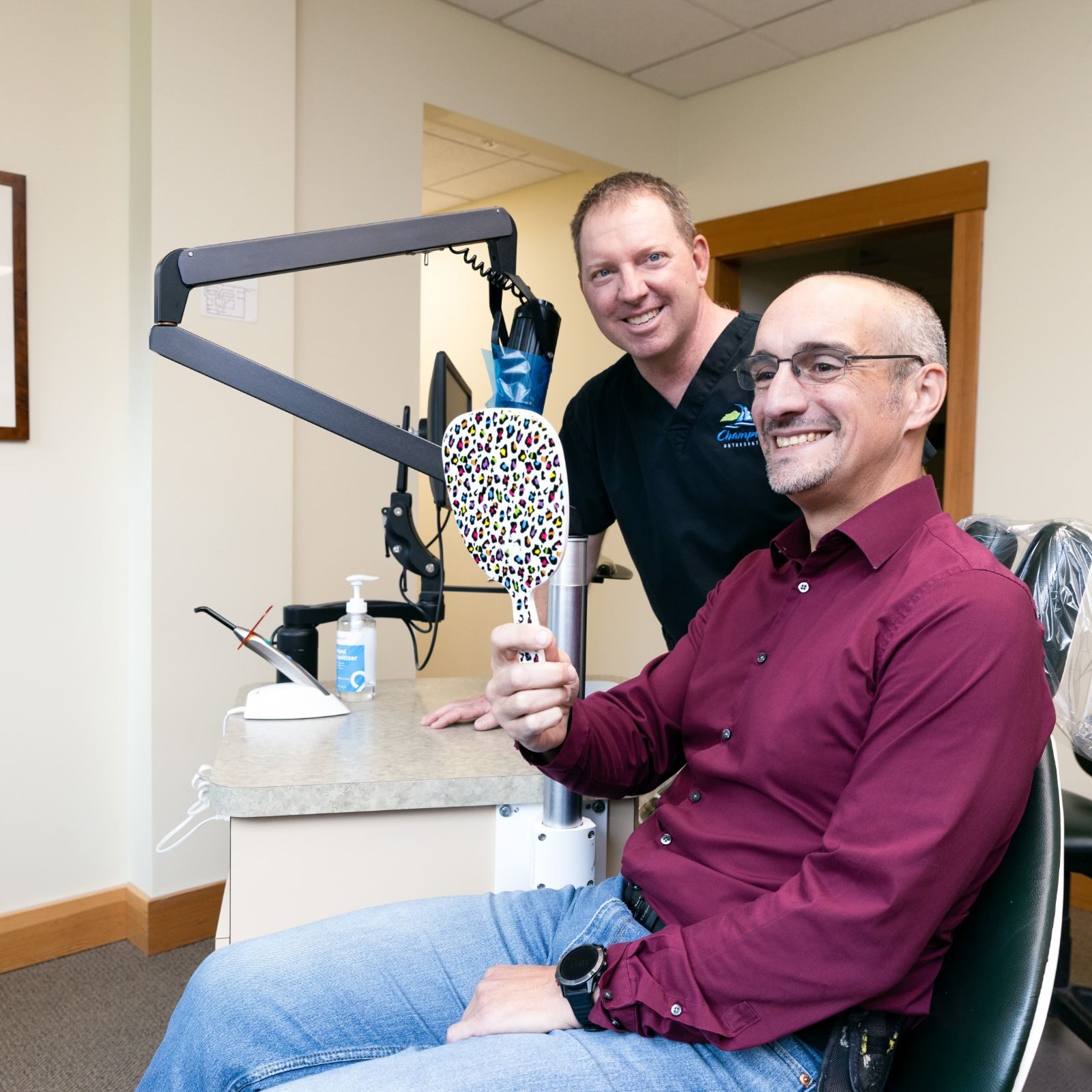
Williston & St. Albans Braces
Trusted Treatment
You can find modern metal braces at Champlain Orthodontics.
Here's everything you need to know about metal braces, from what they are to how they work to the benefits of modern braces and how long treatment lasts.
What Are Braces Made of?
Metal braces are one of the most common types of braces used in orthodontic treatment. They're made of high-grade stainless steel and consist of brackets, wires, and elastic bands.
These parts cooperate to move your teeth into the positions Dr. Ryan and Dr. Eaton prescribe. Metal braces apply pressure to the teeth to gradually move them into the beautiful positions you hope for.
The brackets are attached to the teeth with a special adhesive, and the archwire is then threaded through the brackets.
The elastic bands are used to hold the archwire in place. As the archwire is adjusted over time, it applies pressure to the teeth, causing them to move into the correct position.
You'll need to come into our offic in Williston or St. Albans for regular appointments to adjust your braces and ensure that the treatment is progressing as planned.
Brackets
The brackets are durable and made from a mix of stainless steel, nickel, and other metals.
Brackets have little hooks or doors where a wire is threaded. A bracket can be secured by closing the door, or by placing an elastic over the top of the wire.
Glue
This is what Dr. Ryan or Dr. Eaton will use to attach the brackets to your teeth. It’s common to attach the bracket directly to the tooth with glue.
Wire
This thin piece of metal runs from one bracket to another. Dr. Eaton or Dr. Ryan will change the shape and curvature of the wire to move your teeth in the right direction.
The wire will attach all of your bottom or upper teeth together in many cases, but we might occasionally cut the wire if connecting just a few teeth is better for your treatment plan.
Elastic Ties/O-Rings/Ligatures/Colors
These tiny rubber rings or bands are used to attach the arch wire to the brackets. They’re less rigid than spacers and come in dozens of colors.
Elastics
If you need bite correction, elastics are essential. They are generally strung between an upper bracket hook and a lower bracket hook. This will pull the upper jaw backward to correct an overbite, or the lower jaw backwards to correct an underbite.
We may use rubber bands for many different situations, especially when we want to put extra pressure on the teeth or jaws.
Orthodontic Bands
These are stainless steel rings that are cemented to your teeth using dental bonding agents. These bands can provide an anchor for your braces and orthodontic appliances, but they are not used for everyone.
Spacers
These small elastic “donuts” or rings can be used to create space in between your teeth when needed, typically before bands are placed. They are also referred to as separators.
 Free Consult
Free Consult